Question: Can anyone suggest a better or more pythonic approach, to reducing overlapping range pairs to non overlapping range pairs?
Background: I have a list of tuples representing start and end pairs. I am trying to essentially complete a union of all the start ends pairs. The input start end pairs have overlapping values and the output should represent the input start end pairs without any overlap.
The code below is close but wrong as it outputs an extra range that was not in the input (I also realize it is not very good, and why its wrong). Can anyone suggest a better approach, or some built in function I overlooked?
Apologies for the basic question. Thanks for the help!
##create example data
pairA =[(0,5),(10,12)]
pairB =[(1,2),(11,15)]
pairC =[(1,4),(10,12),(15,17)]
#combine the lists to one list
#ultimately may have n number of lists and felt it would be easier to
merged = pairA + pairB +pairC
# produce union of list * unpacks the arguments of a list
listUnion= sorted(set().union(*merged))
#this is the piece of code I am looking at improving
#it creates new start end pairs based on the union
lastElement =listUnion[-1]
outList=[]
for item in listUnion:
#create start end pair from value i and i+1
if item != lastElement:
outList.append((item,listUnion[listUnion.index(item)+1]))
else:
#last element of the list, becomes the last element of list pair
#it can be ignored
pass
print outList
"""output: [(0, 1), (1, 2), (2,4), (4, 5), (5, 10), (10, 11), (11, 12), (12, 15), (15,
17)]
correct output: would not have (5,10) as there is no overlap here in the input """
